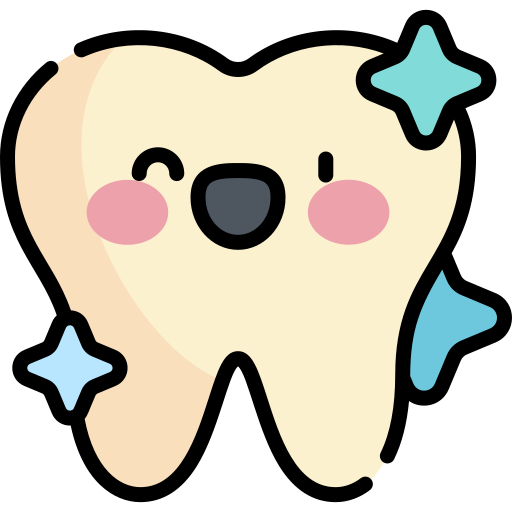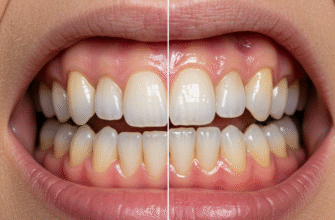That little twinge of anxiety before a dental visit is something many of us can relate to. And often, a big part of that apprehension revolves around the thought of needles and, specifically, dental anesthetics. There is a persistent whisper, sometimes a loud declaration, that all dental anesthetics come with a nasty collection of bad side effects. It is a belief that can make even routine check-ups feel daunting. But is this really the whole story? Or is it time we took a closer look and separated fact from fiction?
The truth is, the narrative that paints all dental anesthetics with the same broad, negative brush is more myth than reality. While no medication or procedure is entirely without potential effects, the idea that troublesome side effects are an inevitable companion to dental numbing just does not hold up under scrutiny. Let’s explore why this myth has taken hold and what the actual experience with modern dental anesthesia is like for most people.
Understanding What We Mean by “Side Effects”
First off, it is crucial to differentiate between an intended effect, a common and usually mild sensation, and a true adverse side effect. When your dentist administers a local anesthetic, the primary goal is to numb the specific area they need to work on. This numbness, while perhaps feeling a bit odd, is precisely what you want – it prevents pain during the procedure. So, is the feeling of a numb lip a “bad side effect”? Not really, it is the medicine doing its job!
Many of the experiences people label as “bad side effects” are actually temporary, predictable sensations associated with the anesthetic wearing off or the injection itself. These are typically not harmful and resolve on their own. True adverse side effects, on the other hand, are unintended, undesirable, and can range from mild to, very rarely, more serious. The good news is that serious issues are remarkably uncommon with the local anesthetics used in dentistry today.
The Usual Sensations: Not So “Bad” After All
So, what can you typically expect when you get a local anesthetic at the dentist? These are some of the most common experiences, which are generally normal and temporary:
- Numbness: This is the star of the show! Your lip, tongue, cheek, or even part of your nose might feel numb or tingly. This effect can last for a few hours after your appointment.
- A “fat lip” or “puffy cheek” sensation: Even if there is no visible swelling, the numbness can make it feel like that part of your face is larger than normal.
- Slight soreness at the injection site: Just like any shot, there might be a little tenderness where the needle went in. This is usually minor and fades quickly.
- Temporary difficulty with speaking or eating: When your mouth is numb, enunciating clearly or chewing carefully can be a bit challenging. This is why dentists often advise you to be cautious with hot food and drinks until the feeling fully returns.
- A feeling of a racing heart or slight jitters: This can happen if the anesthetic solution contains epinephrine (adrenaline). Epinephrine is often added because it helps the numbness last longer and reduces bleeding at the site of treatment. For most people, this sensation is brief, lasting only a minute or two, and is not dangerous.
These experiences are, for the most part, minor inconveniences rather than “bad” side effects. They are signs that the anesthetic is working as intended and will dissipate as the medication wears off.
Why These Sensations Occur
Local anesthetics work by temporarily blocking nerve pathways that transmit pain signals to your brain. They essentially put the nerves in the targeted area to sleep for a little while. The numbness you feel is a direct result of this nerve blockade. Epinephrine, when included, constricts blood vessels in the area. This keeps the anesthetic concentrated where it is needed for a longer period and also helps control bleeding during procedures, which is very helpful for your dentist.
When Could Things Be Less Than Ideal? Rare Occurrences
While the vast majority of experiences with dental anesthetics are smooth, it is true that, like any medical intervention, there can occasionally be other effects. However, these are far from being universal or “bad” in every instance, and serious issues are genuinely rare.
- Allergic reactions: True allergic reactions to modern local anesthetics are exceedingly rare. Dentists are trained to recognize and manage allergic reactions. Make sure to inform your dentist of any known allergies.
- Prolonged numbness (paresthesia): In very uncommon cases, the numbness might last longer than expected – for days, weeks, or even longer. This can happen if a nerve is irritated or bruised during the injection. While unsettling, most cases of paresthesia resolve on their own over time.
- Hematoma (bruising): Sometimes, a small blood vessel can be nicked by the needle, leading to a bruise. This might look a bit dramatic, but it is usually not serious and will heal like any other bruise.
- Nerve irritation: The needle passing close to a nerve can sometimes cause temporary irritation, leading to a brief “electric shock” sensation or short term discomfort.
- Systemic effects: It is extremely rare for local anesthetics, when administered correctly and in appropriate doses, to cause significant systemic problems in healthy individuals. The body metabolizes these drugs quite efficiently. Risks are higher if a patient has certain underlying health conditions or if an inappropriately large dose were given, which dentists are trained to avoid.
Important Information: Always ensure you disclose your complete medical history to your dentist. This includes any medical conditions you have, all medications you are taking (prescription, over the counter, and supplements), and any allergies. This information is absolutely vital for your dentist to choose the safest and most effective anesthetic for your specific needs and to avoid potential interactions. Being open and honest about your health is a key part of safe dental care.
The Dentist’s Role in Minimizing Risks
Your dentist plays a crucial role in ensuring that your experience with anesthesia is as safe and comfortable as possible. They are highly trained professionals who understand the pharmacology of these drugs and how to administer them effectively.
Here is how they contribute to a positive outcome:
- Thorough medical history review: As mentioned above, this is step one. Knowing your health status helps them choose the right drug and dosage.
- Choosing the appropriate anesthetic: There are different types of local anesthetics, some with epinephrine, some without. Your dentist will select the one best suited for the procedure you are having and your individual health profile.
- Precise injection techniques: Dentists are trained in specific techniques to deliver the anesthetic accurately to the target nerves while minimizing discomfort and the risk of hitting blood vessels or causing nerve irritation.
- Using the correct dosage: The goal is to use the smallest amount of anesthetic necessary to achieve profound numbness for the duration of the procedure.
- Monitoring the patient: While serious reactions are rare, dentists and their staff are observant and prepared to manage any unexpected responses.
Advancements in Dental Anesthesia
Dentistry is not standing still! There have been significant advancements in anesthetic agents and delivery methods over the years, all aimed at improving patient comfort and safety.
Modern anesthetic solutions are generally more effective and have better safety profiles than older formulations. Some dental practices even use computer-controlled local anesthetic delivery systems (often called “The Wand” or similar names). These devices can deliver the anesthetic very slowly and steadily, which can make the injection process itself more comfortable for many patients. There are even anesthetic reversal agents available that can speed up the return of sensation after a procedure, though their use is not yet widespread for all routine treatments.
Empowering Yourself as a Patient
You also have a role to play in making your dental anesthesia experience a good one. Being an informed and communicative patient can make a big difference.
- Communicate openly: If you are anxious or have had a less than ideal experience in the past, talk to your dentist about it. They can address your concerns, explain the process, and may have techniques to help you feel more at ease (like topical anesthetic to numb the gum before the injection).
- Ask questions: Do not hesitate to ask what to expect during and after the anesthesia. Understanding the normal sensations can prevent unnecessary worry.
- Follow instructions: Pay attention to any pre- or post-procedure advice your dentist gives you. This might include instructions about eating or drinking.
- Trust your dental professional: Remember that your dentist’s primary goal is to provide you with safe, effective, and comfortable care.
Verified Information: The local anesthetics commonly used in modern dental practices are among the safest drugs in medicine. When administered by a trained dental professional who has taken a thorough medical history, the incidence of serious adverse reactions is exceptionally low. The profound benefit of undergoing necessary dental treatment without pain far surpasses the minimal risks associated with local anesthesia for the overwhelming majority of patients.
Conclusion: Putting the Myth to Rest
So, is it true that all dental anesthetics have bad side effects? The simple answer is no. That is a myth, and a harmful one if it prevents people from seeking necessary dental care. While any medication can have effects, the term “bad side effects” is often misapplied to the normal, temporary, and intended sensations of dental numbing.
Modern dental anesthesia is, by and large, a remarkably safe and incredibly beneficial tool. It allows complex and potentially painful procedures to be performed comfortably, which is essential for maintaining good oral health. Instead of fearing the unknown, having an open conversation with your dentist can demystify the process and help you understand what to expect. The overwhelming likelihood is that your experience will be uneventful, with the only significant “effect” being a pain-free dental procedure. And that is certainly not a bad thing at all.








